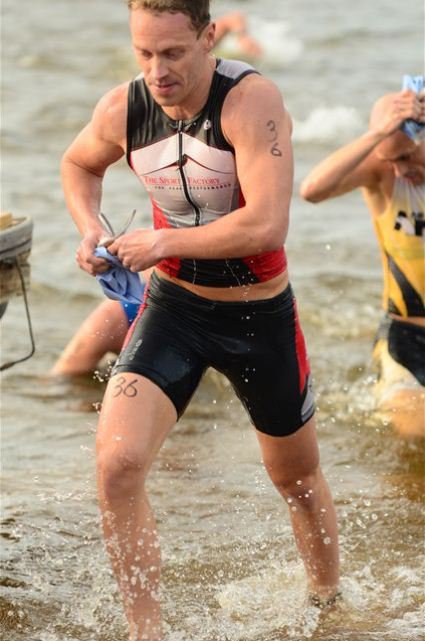Pre Season Swim Progression and Technique
Posted by By Coach Tracy Palmer on 23rd Apr 2015
By Coach Tracy Palmer
As a coach and an athlete, I have always welcomed the off season. I like the change in pace and the change in focus with my athletes. We may work on running a little more, spending more time in the saddle, and doing a lot of strength training, but what about the swim? Many triathletes default to swimming more laps, when really the onset of the off season should be focused on swimming less, swim slower, but learning to swim better.
Water is more than eight hundred times denser than the air, so your swim technique is vital to swimming efficiently. Even small changes in movements can yield a large drop in lap times. For example, if you swim with your head up instead of down, you are creating significant drag in the water. Correcting this single inefficiency may drop minutes off your next triathlon swim split and leave you less fatigued coming out of the water. As you attempt to push through water with bad form, the harder the water is pushing back at you, making inefficient swimming very fatiguing.
So, what should the plan be to find your path of least resistance? Here are my suggestions for the next 2 months. If you can commit yourself to these tips between now and January, you will be able to start adding the laps back with less fatigue and more speed.
1. Have a swimming professional look at your stroke. It is almost impossible to know what your inefficiencies are without seeing them yourself or having someone else look at your stroke. Make sure you work with someone who knows how to correct your inefficiencies, not just identify them.
2. Drill, drill, drill! You should have left your swim lesson with some drills to work on. Practice these drills over and over and over again. The more you drill and swim slow and focused, the more your body will start to make connections and get that "feel" for the water.
3. Hit the pool 3-5 times a week. You do not need to be in the pool for an hour. 15-20 minutes 3-5 times a week is all you need. If you travel, get in the little pool at your hotel. Remember, it is not about how many laps right now, it is just about gaining a better awareness in the water and working on your technique.
4. Incorporate swim specific strength training into your off season strength routine. Add focus to your lats, back, shoulders, and core. Not only do you want to become more efficient this off season, but stronger, so the pull phase of your stroke becomes easier and more powerful.
5. Go back for follow-up lessons. If your instructor is committed to your improvement, he/she will not throw everything at you during your first lesson. You cannot fix your entire stroke in one swim lesson and you cannot work on all aspects of your stroke at once. Each lesson should build on the previous lesson, so that in a few months you are now more efficient overall.
The aerobic training you are doing while running and biking will help you in the pool next season. Remember your heart and lungs don't know whether or not you are swimming, biking, or running. Try to focus less on how many laps you are swimming right now. If you commit yourself to swimming more often, but with a focus of learning to become a better swimmer, you will find the endurance build you do later in the season will come easier and faster.


